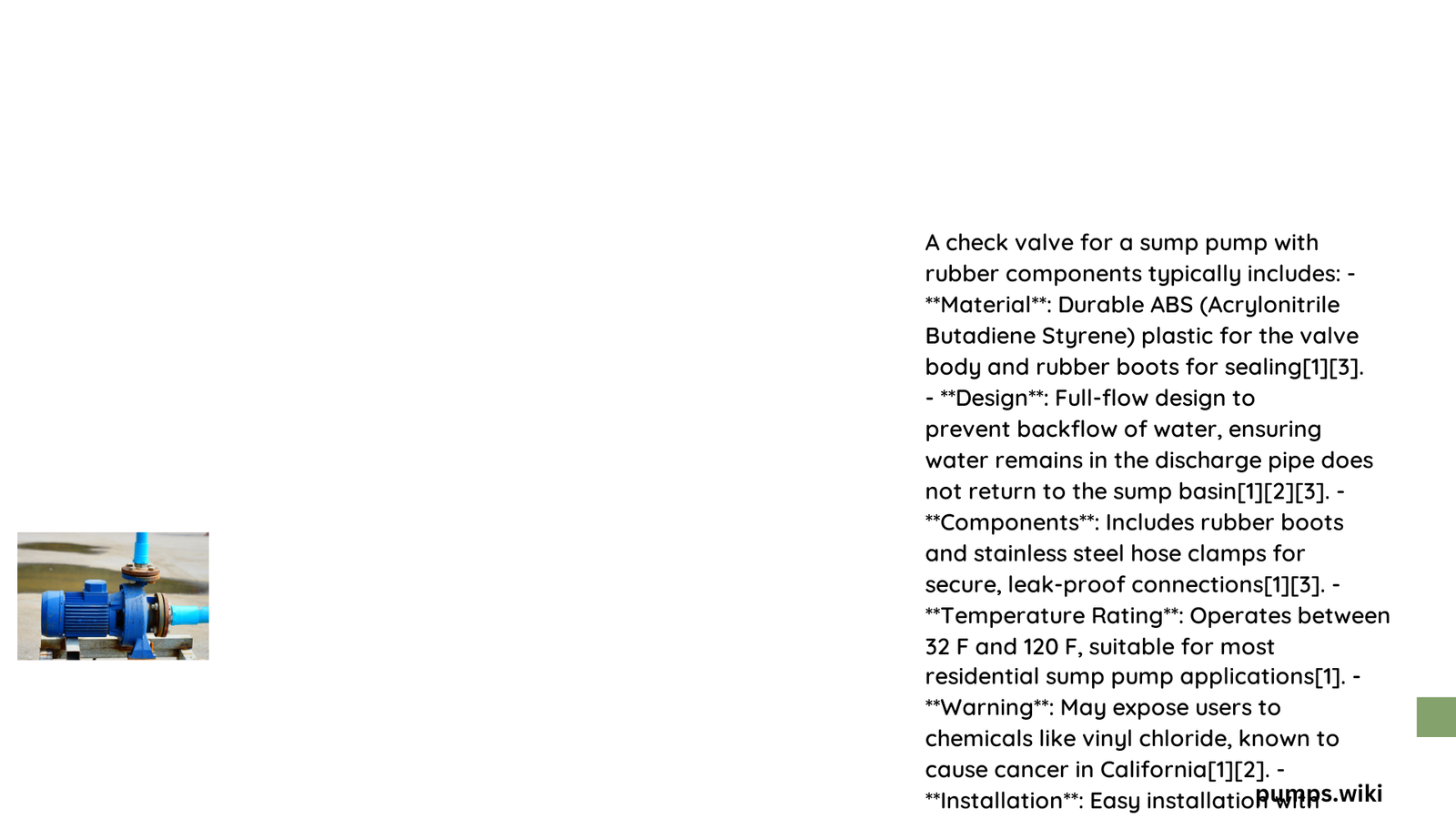Check valve sump pump rubber represents a critical component in preventing backflow and ensuring efficient water drainage in residential and commercial pump systems. These specialized rubber components provide essential sealing, flexibility, and durability, enabling sump pumps to effectively manage water accumulation and protect properties from potential flooding risks. Understanding their technical specifications, installation requirements, and maintenance strategies is crucial for homeowners and professionals seeking reliable water management solutions.
What Makes Check Valve Sump Pump Rubber Essential?
Check valve sump pump rubber serves multiple critical functions in water management systems. These specialized rubber components create reliable seals, prevent water backflow, and accommodate pipe movement while maintaining system integrity.
Why Material Selection Matters?
| Rubber Type | Durability | Temperature Resistance | Chemical Compatibility |
|---|---|---|---|
| Buna-N | High | -40°F to 250°F | Excellent oil resistance |
| EPDM | Moderate | -50°F to 300°F | Superior water resistance |
| Silicone | Excellent | -65°F to 450°F | Broad chemical tolerance |
How Do Different Rubber Types Perform?
Buna-N Rubber Characteristics
- Durometer hardness: 40-90 Shore A
- Excellent for water and oil environments
- Typical lifespan: 3-7 years
- Cost-effective solution
EPDM Rubber Benefits
- Superior water resistance
- UV and ozone resistant
- Temperature range: -50°F to 300°F
- Ideal for outdoor applications
What Factors Influence Check Valve Rubber Performance?
Several critical factors impact check valve sump pump rubber effectiveness:
- Material Quality
- Durometer hardness
- Chemical composition
-
Manufacturing precision
-
Environmental Conditions
- Water pH levels
- Temperature fluctuations
-
Potential chemical exposures
-
Installation Techniques
- Proper alignment
- Correct torque specifications
- Secure connection methods
How to Install Check Valve Sump Pump Rubber?
Required Tools
- Adjustable wrench
- Channel-type pliers
- Teflon tape
- Hose clamps
Step-by-Step Installation Process
- Disconnect power source
- Remove existing pipe connections
- Slide rubber couplings onto pipe ends
- Attach check valve
- Secure with stainless steel hose clamps
- Test for potential leaks
When Should You Replace Check Valve Rubber?
Replacement Indicators:
– Visible cracks or tears
– Water leakage around connections
– Reduced pump performance
– Unusual operational noise
– Corrosion on metal components
Recommended Maintenance Strategies
- Inspect rubber components annually
- Clean and lubricate connections
- Monitor system performance
- Replace preventatively every 5-7 years
- Use manufacturer-recommended lubricants
Conclusion

Check valve sump pump rubber represents a sophisticated engineering solution for managing water drainage systems. By understanding material properties, installation techniques, and maintenance requirements, homeowners can ensure long-lasting, reliable pump performance.
Expert Recommendations
- Choose high-quality rubber materials
- Follow manufacturer installation guidelines
- Conduct regular system inspections
- Consider professional maintenance annually
Cost Considerations
| Quality Level | Estimated Replacement Cost | Expected Lifespan |
|---|---|---|
| Budget | $20 – $50 | 2-4 years |
| Mid-Range | $50 – $100 | 5-7 years |
| Premium | $100 – $250 | 8-10 years |
Reference:
– [FloodStop Check Valves Documentation]
– [Sump Pump Manufacturer Guidelines]
– [ASTM Rubber Material Standards]
